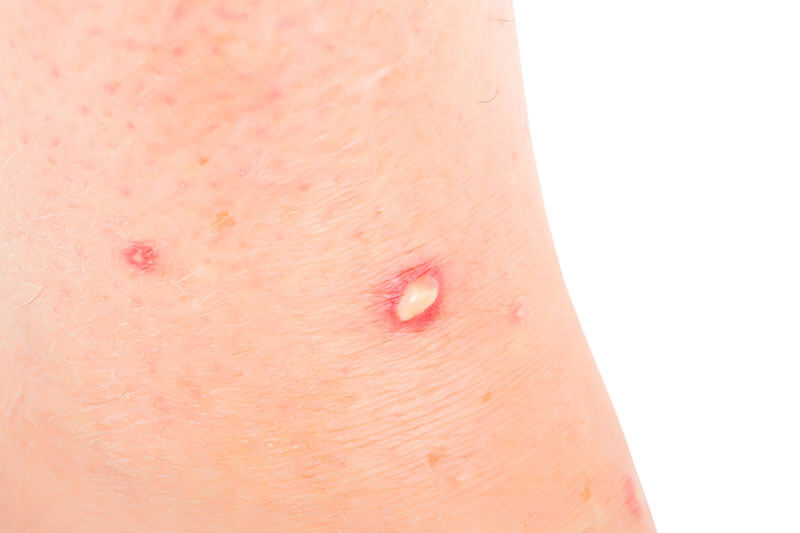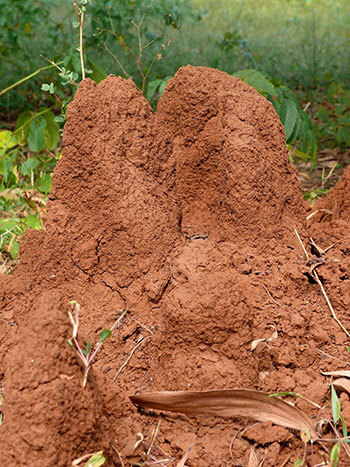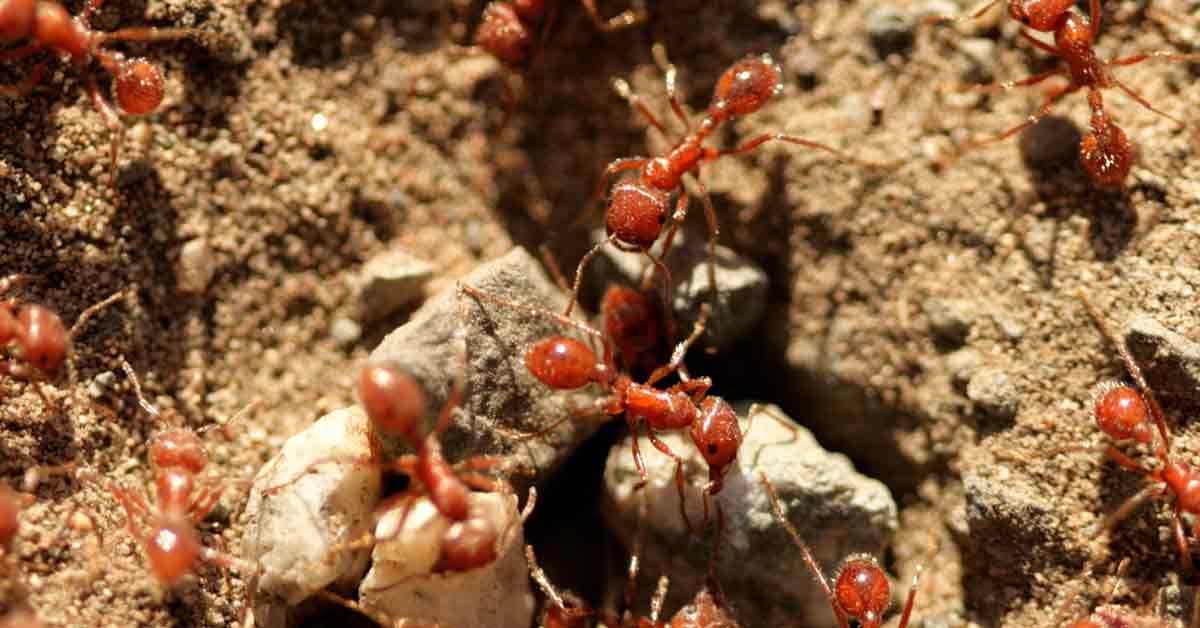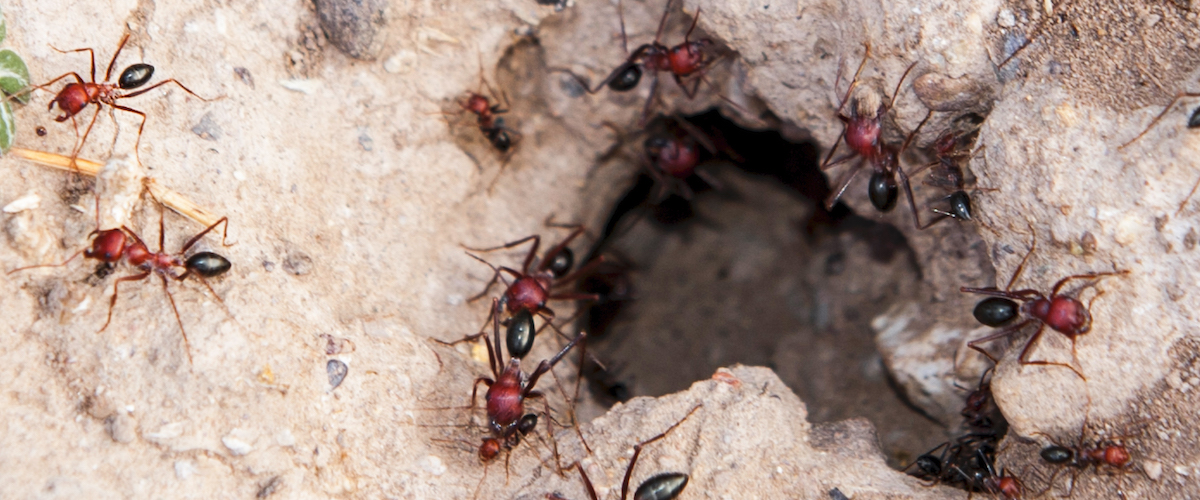An Interview With Dr. Kelly Loftin, Fire Ant Expert
Fire ants are native to South America, but were accidentally imported to the United States between 1933 and 19451 by trade ships transporting goods.2 The name fire ant comes from the burning sensation victims experience after being bitten — a pain you know all too well if you've ever encountered these pests. Since they first arrived in Port of Mobile, Alabama,2 fire ants have spread rapidly throughout the southern United States.
To help you learn more about fire ants, including how to identify and manage this stinging pest in your lawn, we interviewed Dr. Kelly Loftin, an Extension Entomologist at the University of Arkansas. Dr. Loftin is currently researching fire ant quarantine treatments for commercial sod and fire ant management in soybeans.
Amdro: Where in the United States are fire ants a problem?
Loftin: Fire ants are well established in the southern U. S. Currently, fire ants inhabit all or parts of Alabama, Arkansas, California, Florida, Georgia, Louisiana, Mississippi, New Mexico, North Carolina, Oklahoma, Puerto Rico, South Carolina, Tennessee, Texas and Virginia. They also occur sporadically in Kentucky, Missouri and Maryland.
Amdro: How do you identify fire ants in a lawn?
Loftin: Fire ants are small, reddish brown and only about 1/8- to 1/4-inch long. Variation in size is a good distinguishing feature of fire ants, as many other ant species are uniform in size. These stinging pests are usually recognized by the mounds they build and the pain they inflict. Their aggressive nature compared to other ant species is an easily recognized trait. If a mound is disturbed, hundreds of fire ant workers will swarm out from it and run up vertical surfaces to sting.
Fire ant mounds appear “worked" and fluffy, particularly a few days after a rain event or irrigation. Unlike most ant mounds, fire ant mounds do not have a central opening at the top of the mound. Fire ants enter and leave the mound through underground tunnels that course from the mound. Fire ant mounds can range from a few inches in height in a typical managed lawn to over 18 inches in an undisturbed area.
A microscope is required to see the distinctive morphological characteristics of fire ants, which include:
- Antennae with ten segments.
- A waist (pedicle) with two segments (nodes) between the thorax and abdomen (gaster).
- Two mandibles, each with four teeth.
- The abdomen tip, which possesses a visible stinger. Amdro:
Amdro: What danger do fire ants pose to people and pets?
Loftin: Fire ants sting, often at the same time, because enormous numbers of worker ants are together in a single nest. Worker ants bite with their mandibles and inject venom with their stingers, often aggressively and repeatedly. When a person or animal disturbs a fire ant mound by stepping on it, several to hundreds of ants can rapidly crawl up the victim's legs and begin stinging within only 10 to 20 seconds. Stings cause burning or tingling at the site. About a day after a sting, the fire ant's venom causes the formation of a characteristic white, fluid-filled pustule or blister at the sting site.
Multiple stings can cause severe medical reactions. Infants, immobile and neurologically-compromised people, and the elderly are at a higher risk of stinging incidents because they are less able to avoid stings. For less than one percent of victims, a single sting can lead to a major allergic reaction called anaphylaxis. These highly sensitive individuals react to a specific protein found in fire ant venom. People with allergies to fire ant venom can treat themselves in minutes with an injection of epinephrine through a device called an epi pen. Left untreated, anaphylactic shock could lead to death within minutes.

 Amdro: What attracts fire ants to lawns?
Amdro: What attracts fire ants to lawns?
Loftin: Fire ants are drawn to — and tend to build colonies in — open, sunny areas, such as lawns, pastures, fields and parks. Mounds are often built next to sidewalks, driveways or other structures that absorb heat. Moisture, frequency of mowing and soil type may influence mound size, however, fire ants can build colonies in most soil types.
Amdro: What steps can be taken to rid lawns of fire ants?
Loftin: The most effective and least expensive method to control fire ants is the use of fire ant-specific baits. Most fire ant baits are granular and applied outdoors, while most liquid baits are used indoors and are aimed at a variety of ants foraging into the home. Many granular baits contain less than one percent of insecticide (active ingredient) and rely on the fact that fire ants gather and share food with other members of the colony, including the queen or queens.
The key to controlling the fire ants is to kill the queen. But you must first know that the ants are actively foraging for food. To determine this, place a few bits of a hot dog or some greasy chips in the area you plan on treating. If after 15-30 minutes the food is covered with fire ants, you know they are foraging and that a bait application is likely to be effective.
When properly used, fire ant baits can reduce the number of fire ants and active mounds by 80-90 percent. In general, the ground temperature should be at least 60 ºF to use baits. For good control, apply fire ant bait twice each year, in the spring and fall. For better control, supplement your baiting program by spot-treating mounds that survive the bait treatments.
Conclusion
Fire ant mounds are only representations of what is really happening below ground. Tunnels can reach 25 feet from the mounds and can spread to areas where your family and pets are likely to disturb their nests, such as gardens and play areas. By the time fire ants create mounds, these unwanted intruders have been at work for months. Manage fire ant infestations and help prevent new mounds with an effective two-step treatment:
Step 1: Treat your yard with Amdro Fire Ant Killer for Lawns. Once this product is applied, worker fire ants take it back to the queen. Once the product is consumed and shared with the rest of the colony, the remaining ants in the mound die.
Step 2: Apply Amdro Fire Ant Killer for Mounds as needed to any individual mounds that appear throughout the warm season for consistent fire ant management.
If you live in a warm climate, fire ants may be in your region. Keep an eye out for these pests and their mounds as temperatures increase to help prevent dangerous stings to your family and pets.
Amdro is a registered trademark of Central Garden & Pet Company.
Sources:
1. "Red Imported Fire Ant," United States Department of Agriculture National Invasive Species Information Center, March 2016
2. "Why are they Called "Imported" Fire Ants?," Cooperative Extension System, June 2014




